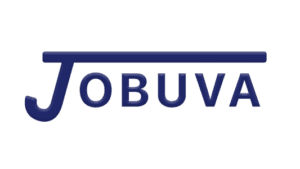Writing effective job descriptions is an art that recruiters must master. A well-crafted job description not only attracts top talent but also serves as the foundation for a successful hiring process. In this comprehensive guide, we’ll delve into the essential elements that make up an effective job description, empowering recruiters to create listings that stand out in today’s competitive job market.
The Power of Precision
Job Title Matters
Choosing a clear and standardized job title is the first step towards precision. Avoid internal jargon and opt for titles that resonate with the wider job market. A precise job title sets the right expectations and attracts candidates with the right skills.
Writing Job Summary
The job summary serves as the hook, capturing the attention of potential candidates. Keep it concise yet impactful, highlighting the role’s purpose and the positive impact it can make within the organization.
Responsibilities and Duties
Break Down Tasks
List specific tasks using action verbs to convey responsibility and achievement. Break down responsibilities hierarchically to give candidates a clear understanding of the role’s focus.
Qualifications Unveiled
Clearly outline the skills and qualifications required. Distinguish between mandatory and preferred qualifications to attract a diverse pool of candidates.
Scope and Impact
Describe the broader scope of the role and its impact on the organization. Connect the role’s responsibilities to the company’s overall goals, giving candidates a sense of purpose.
Company Overview
Mission and Values
Introduce the company’s mission and values to provide context for the role. Showcase the company culture and emphasize the alignment between the candidate’s values and those of the organization. It’s very important here to highlight your Employer Brand, showcasing the organization as an employer of choice in the market.
Growth Opportunities
Highlight potential career paths and growth opportunities within the organization. Communicate the company’s commitment to employee development.
Reporting Structure
Supervision and Collaboration
Clearly state reporting lines and describe collaboration with other teams. Provide insight into the team’s structure, dynamics, and size.
Team Dynamics
Offer details about the team’s dynamics and emphasize the balance between teamwork and independent work, depending on the role.
Compensation and Benefits
Salary Transparency
Specify the salary range or provide details on how it will be determined. Highlight opportunities for bonuses, commissions, and benefits.
Comprehensive Benefits
List the comprehensive benefits package, including health insurance, retirement plans, and unique perks that set the company apart.
Application Process
Clear Instructions
Outline the application process, including required documents and deadlines. Specify the contact person for inquiries.
Tone and Language
Inclusive Language
Use inclusive language to attract a diverse range of candidates. Avoid gendered or biased language.
Engaging Tone
Write in a tone that reflects the company culture and values. Be concise and engaging to maintain the candidate’s interest.
Compliance
Equal Opportunity Employer
Include a statement affirming the company’s commitment to being an equal opportunity employer. Ensure compliance with relevant employment laws.
Revision and Review
Feedback Loop
Establish a feedback loop with hiring managers and current employees for continuous improvement. Regularly review and update job descriptions to reflect changing organizational needs.
Inviting the Right Candidates
In conclusion, writing effective job descriptions is a blend of precision, context, and engagement. By following these guidelines, recruiters can create listings that not only attract the right candidates but also set the stage for successful recruitment. Empower your recruitment efforts by mastering the art of writing job descriptions that resonate in the competitive job market.





